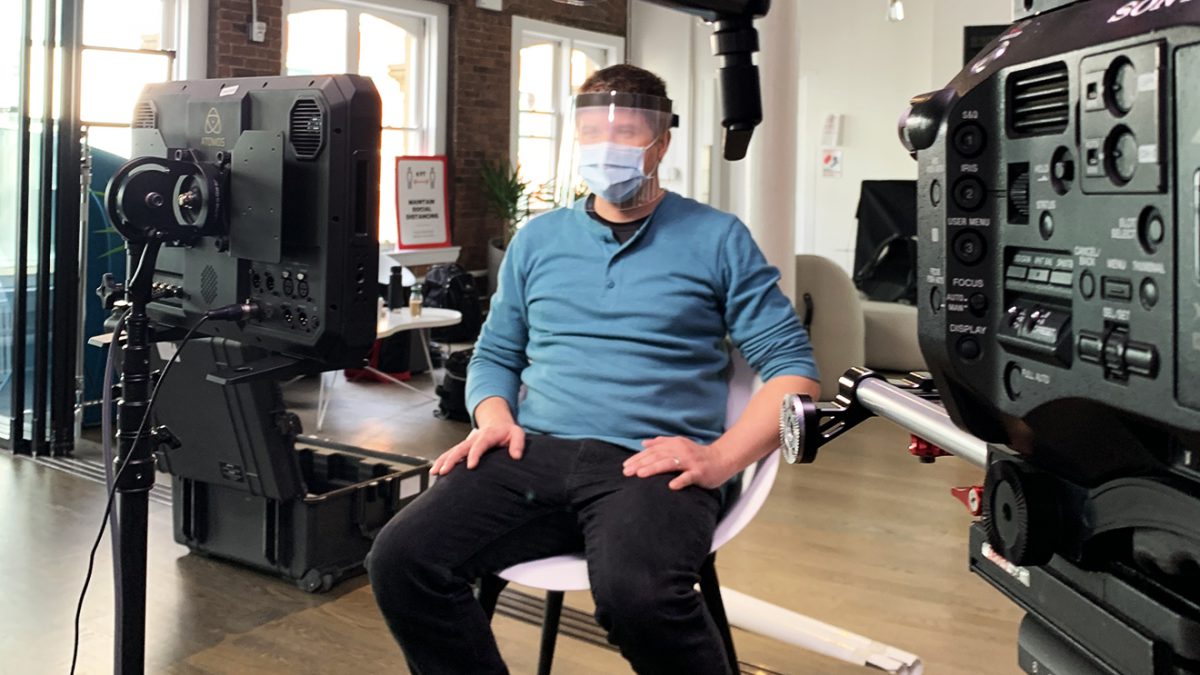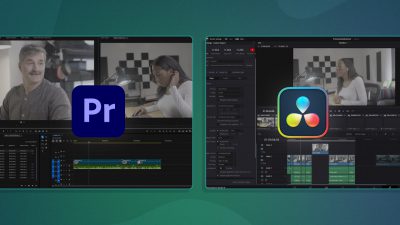A year ago, video productions of all shapes and sizes came to a screeching halt. The outbreak of COVID-19 upended the industry, and put many, many people out of work. As the months ground on, creative ways were found to manage shoots safely, and work has resumed for much of the industry.
Still, a lot of that work looks pretty different compared to a year ago. Video production has been fundamentally changed by the pandemic in important ways. Here are the five changes that will shape the future of video production.
The Experience on the Ground
To better understand these trends, we spoke to Cara Yeates, current partner and Head of Production at Trigger Creative, a video production studio. She joined Nick LaClair, Creative Director at SproutVideo, for a round of mezcalitas in the second episode of our Cheers series, where we celebrate important people and topics in the video industry.
Cara has been working on video shoots as a producer during the pandemic, and is responsible for keeping her crew healthy and safe. Watch below to hear what she has to say about the important safety guidelines to follow on set, and what the future holds for video production.
Keep reading for the top five takeaways from Cara’s experiences on set.
1. Health and Safety First
Health and safety on set has been an ongoing issue in the film industry for a long time. From unending shoot days with heavy gear, to dangerous stunts, there are many risks for those behind and in front of the camera.
In some ways, the film industry was primed to adapt to this challenge, despite its reliance on large groups of people and events. Between union and guild guidelines, and the protocols for stars and high-powered subjects on set, many working in film are accustomed to highly regimented procedures. Granted, this is a whole other level of complexity, but prior experience carefully following important regulations certainly helps in times like these.
The pandemic pushed the health and wellbeing of cast and crew members to the forefront. New guidelines from different guilds and organizations have codified those practices and helped productions of all sizes to be safer for everyone involved.
Those new habits won’t necessarily go away as the pandemic ebbs. After all, a shoot can be derailed by illness, even if it’s not during a pandemic. And, some of the practices are helpful for more general well-being, like limiting a shoot day to ten hours.
There has been a problem in the film industry with overworking people… I think it’s really a safety issue. Properly scheduling your day for 10 hours of shooting is going to keep everyone safe and on track in the long term.
– Cara Yeates, Trigger Creative
Granted, we don’t expect most productions to maintain rigorous testing and on-set medics if they aren’t warranted. Still, if the past year has taught us anything, it’s that safety has to come first if you want to be able to do anything else.
2. Hybrid and Online Events
As work has picked up again for the video industry, much of the productions pertain to replacing or extending live events that would typically be held in person. While we’re eagerly anticipating a return to in-person events of all shapes and sizes, online-only or hybrid events are going to stick around for the long term.
Why? Because the pandemic has shown that they work for many types of events and gatherings. In some cases, they even offer distinct advantages. Just because in-person events will become possible again doesn’t mean they’ll obviate the need for an online component, or always be the best solution.
For example, large concerts, conferences, and festivals have been live streamed for years. After a crash course in how to do that over the past year, smaller events that would not have bothered before now have the capabilities and equipment to do so.
Importantly, consumer expectations have shifted. If you can’t attend in person, there’s the assumption that you’ll be able to attend virtually. In turn, that will drive how events are designed and marketed. This, more than anything, will keep the online and hybrid event model around for the foreseeable future.
3. Leaner Productions
Part of being able to produce video during the pandemic has meant doing more with less. After all, having fewer crew members on set reduces the risk of transmission and helps keep everyone safe.
There is every reason to think that we will happily bring back certain roles and team sizes when necessary. However, the reality is that after a year of doing without, many crew members and talent have learned new skills that reduce the need for additional team members.
For example, at SproutVideo, members of our marketing team learned how to set up our own DSLR camera kits and film ourselves so we could keep producing video while working remotely. Before, we would have relied on our in-house video team to handle the setup and filming in our office studio.
While we’re greatly looking forward to getting back to the studio, we can now be more nimble, and produce more video no matter where we’re located. If you’re setting up or expanding your own home studio, check out our guide to the video studio upgrades that are worth your while.
Many teams have made similar investments, and learned new skills that won’t go away when the pandemic does. We expect many will continue to produce more video with less, while welcoming back the extra helping hands when and where it makes sense.
4. Production Partners
Pre-pandemic, most production studios would typically handle all shoots for a project, even in far-flung locations. Today, with travel restrictions and quarantine requirements, shoots on location have only been possible with the help of local film crews on the ground.
In many cases, these partnerships have been so successful that studios expect to continue working in this manner going forward. After all, the partnerships offer several benefits. For instance, there’s the cost savings in terms of time and money on travel, and the local expertise for scouting, logistics, and regulations.
I was nervous at first because you’re really putting your baby in someone else’s arms, but I’ve found really amazing, passionate filmmakers all over the world to work with.
– Cara Yeates, Trigger Creative
With new connections, and the technology to make it possible, production partners expand the scope of what studios can achieve. Importantly, they also save time and money. For those reasons, we think production partnerships are here to stay.
5. Remote Crew Members
After a full year of being forced to be remote, well, we’ve gotten pretty good at it. Now, it’s second nature to loop people in via video to participate in any aspect of video production.
It’s not just the partnerships with studios and film crews in different locations. It’s also the clients needing to approve shots, or the director of photography, or the team broadcasting the stream live. All you need is a live video feed, and anyone, anywhere, can contribute to the shoot.
Of course, there is a certain energy and excitement that comes with being on set. Nothing can ever truly replicate that or replace it. However, the efficiencies gained by this technology will ensure remote crew members remain the norm going forward. It just might not be the entire crew.
What trends do you see emerging from the pandemic as video production resumes? Share your thoughts in the comments below.








